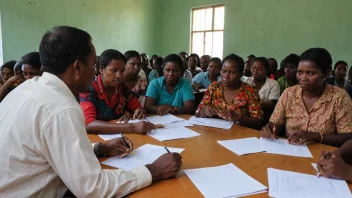Humanitarian projects play a vital role in addressing the needs of communities around the world. Whether it's providing food, shelter, medical care, or education, these initiatives often rely on funding to make a meaningful impact. Fundraising can be a daunting task, but with the right strategies, you can effectively generate the support needed for your humanitarian projects. Here are five key recommendations to help you fundraise effectively.
1. Leverage Social Media
Social media platforms are powerful tools for spreading awareness and engaging potential donors. By sharing compelling stories and visuals from your projects, you can connect with a wider audience.
- Engaging Content: Create posts that highlight the impact of your work and the needs of the communities you serve.
- Share Testimonials: Include stories from beneficiaries to illustrate the difference donations can make.
- Interactive Campaigns: Utilize challenges or hashtags to encourage followers to participate and share your cause.
2. Build Partnerships with Local Businesses
Collaborating with local businesses can enhance your fundraising efforts significantly. Many businesses are eager to support community initiatives, and partnerships can be mutually beneficial.
- Sponsorship Opportunities: Offer businesses a chance to sponsor events or projects in exchange for recognition.
- Joint Events: Organize fundraising events together, such as charity runs or silent auctions.
- In-Kind Donations: Approach businesses for product donations or services that can help reduce project costs.
3. Host Engaging Events
Events are a fantastic way to engage the community and raise funds simultaneously. Consider hosting a variety of events that cater to diverse interests.
- Workshops and Seminars: Provide valuable information or training sessions while encouraging donations.
- Community Festivals: Organize a festival that includes entertainment, food, and booths to raise awareness and funds.
- Online Webinars: Use virtual platforms to reach a global audience and share your mission.
4. Create a Compelling Narrative
People are more likely to donate if they feel emotionally connected to your cause. Craft a compelling narrative that explains the importance of your projects.
- Use Storytelling Techniques: Share relatable stories that showcase the challenges faced by the communities you serve.
- Visual Content: Utilize photos and videos to capture the essence of your projects and engage potential donors.
- Clear Call-to-Action: Guide your audience on how they can help, whether through donations, volunteering, or sharing your message.
5. Follow Up and Show Impact
After a fundraising campaign, it’s crucial to follow up with your donors and show them the impact of their contributions. This builds trust and encourages future support.
- Thank You Notes: Send personalized thank you messages to express gratitude and acknowledge their support.
- Impact Reports: Share updates and reports highlighting how their donations have made a difference.
- Continuous Engagement: Keep your donors informed about upcoming projects and opportunities to get involved.
In conclusion, effective fundraising for humanitarian projects requires creativity, engagement, and a strong narrative. By leveraging social media, building partnerships, hosting events, creating compelling stories, and following up with donors, you can significantly enhance your fundraising efforts. Remember, every effort counts, and together we can make a difference in the lives of those in need.






